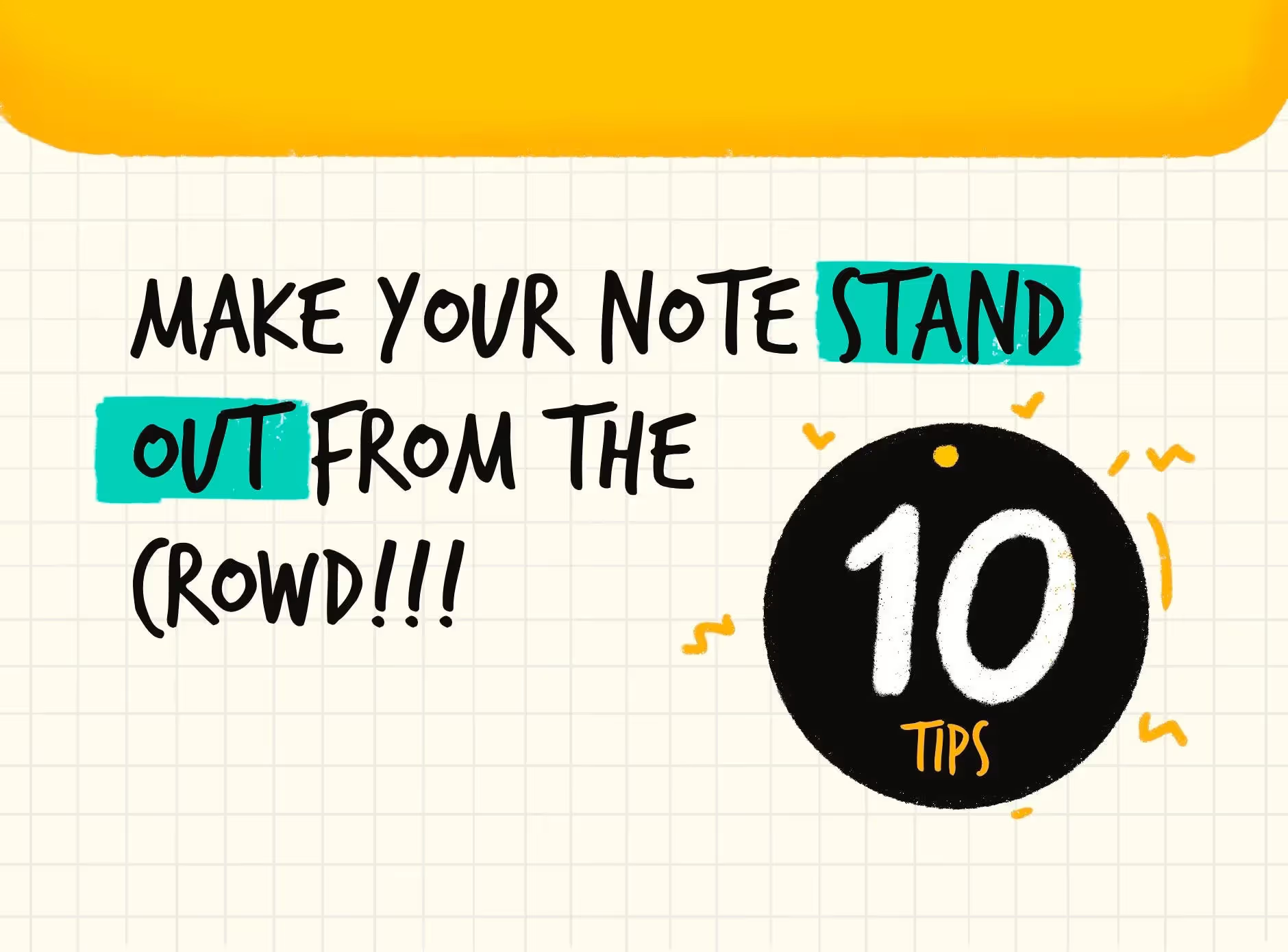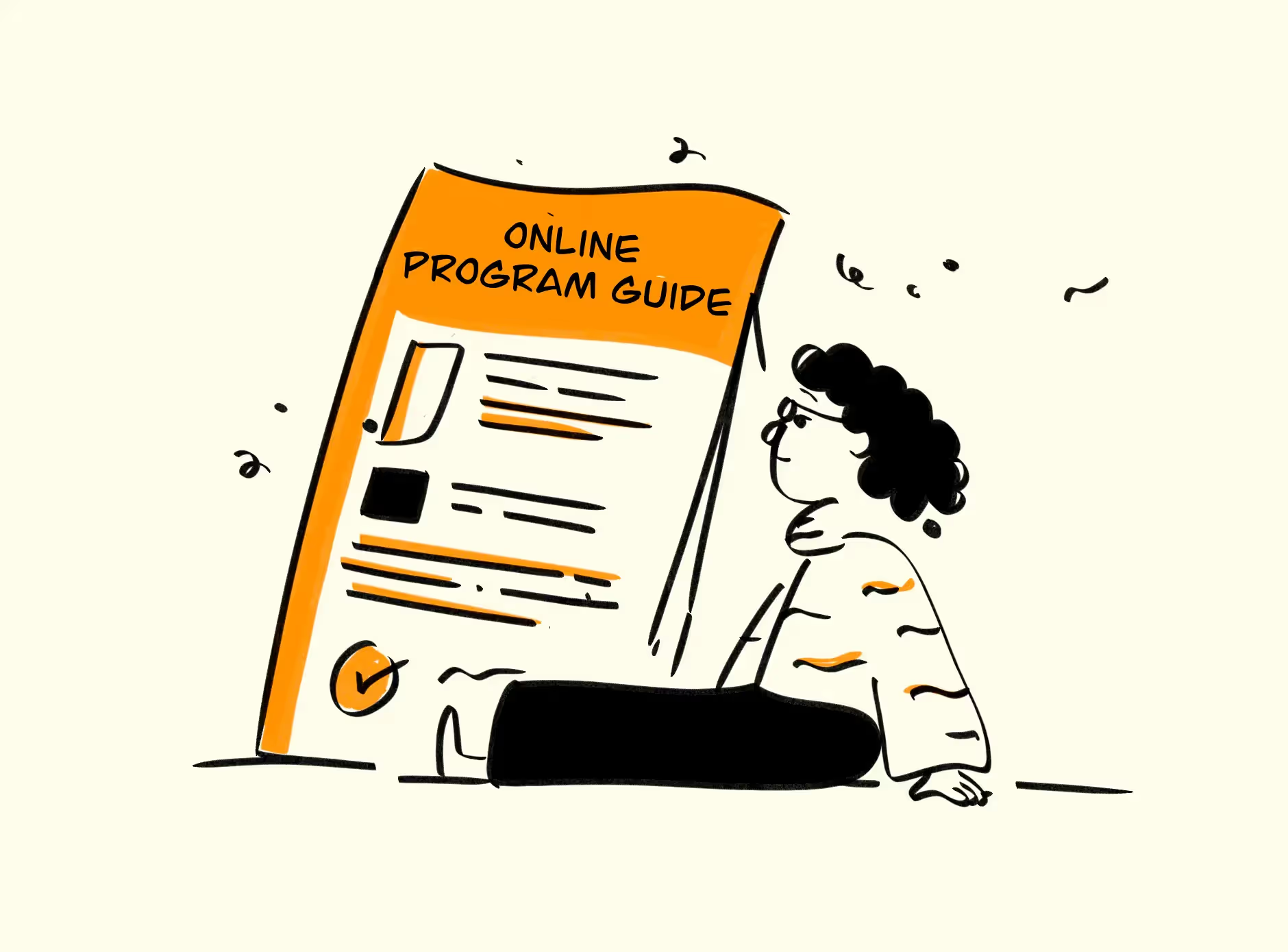


Key Takeaways
- Keep Notes Simple and Clear: Use straightforward language and focus on essential concepts to make notes accessible and effective for students.
- Chunk Information and Use Visuals: Break content into smaller sections and incorporate diagrams or mind maps to make complex information more digestible and engaging.
- Encourage Collaborative Note-Taking: Promote teamwork by allowing students to create shared notes, boosting understanding and retention through group learning.
- Design for Accessibility and Flexibility: Create notes that students can access anytime and adapt them to support varied learning preferences, fostering better study habits.
We all have those times when we want our notes to stand out. Sometimes they don’t, and it’s due to laziness; sometimes, it’s a result of us not staying on top of the most recent trends and buzzwords.
Regardless of your situation, there’s no reason why you should continue to settle for mediocre results. Whether you’re a student who wants to get a good grade or a teacher who wants to make sure they’re teaching students something worthwhile, study notes don’t have to be boring.
Did you know that students tend to skip over 30% of the content?
This means that your notes might be optimized for yourself rather than for your future students. It also means that you can create a study guide simply from your own lecture notes.
Here are 10 tips to maximize the impact and effectiveness of your study notes
To maximize the impact and effectiveness of teacher notes to students, here are 10 valuable tips that will revolutionize your note-taking game.
1. Use simple writing
The secret to good writing is simple: say what you want to communicate clearly and directly. I spend a lot of time writing notes to students as well as our dear teachers, and it’s always tempting to try to sound “professorial.”
But if I want them to understand what I’m saying, the best policy is just to write the way I usually do. To be more precise, I try to use shorter sentences than usual and shorter words than usual in my notes. That doesn’t mean I try to avoid complicated material. On the contrary, I often want to write about things that are difficult and require complex explanations. But the more complex something is, the more critical it is to write simply about it. Next time you write a note to a student, try to express yourself in the most straightforward possible language. Don’t worry that this will make you sound dumb or leave you looking stupid if anyone else reads it. If someone else does read it, they’ll probably be pleased to see how clearly you’re able to explain things and how much care you take with your students.
The most straightforward possible sentence is often not very simple.
It may take a few tries to get it right:
“I think I have most of the logic right, but there is one small detail I’m getting wrong.”
“I think I’ve got most of the logic right, except one small detail.”
“I’ve got most of the logic right.”
“I’ve got it!”
But it’s worth the effort. If you can use more straightforward language, why wouldn’t you?
2. Focus on simplicity
Simple Note-Making is Better.
Most teachers often make the mistake of making their notes more complicated than necessary. They feel that to prove their value and expertise, they must over-complicate things. This is the wrong approach. Students do not need teachers to tell them how smart they are or how much the teacher knows about a topic. Too much information can be confusing and overwhelming for students.
Instead, it is better to simplify things and focus on only sharing basic information that students need to know. A common example of a teacher over-complicating things is creating long lists of vocabulary words without any context or explanation as to why they are important or how they relate to the lesson. Students do not want to memorize these lists of words without understanding their meaning or why they are essential. Instead, it is better for teachers to choose the most important vocabulary words and show how they are used in sentences or phrases so that students can see the context and understand their meaning.
3. Limit the use of distracting colours
The colour red is a great choice for the colour of notes. Red is clear and sharp, easy to read in poor light. Red looks good on paper too. But it’s also a very distracting colour if you’re trying to make notes to students. It can make it hard to find your place. And it’s a bad choice for comprehension: even when combined with grey, red makes it harder to read than white does. The colour red has long been thought to make it harder to read. This has been confirmed in several studies - one in the UK and one in the US.
In my experience, students will understand best what you are writing about if your notes are black-and-white. White pages don’t show the distracting colours as well, but the difference is slight and not really noticeable. If you’re going to use colours to make notes to students, don’t use a really dark background. Your notes will be less easy to read than if you used a lighter background if you do. And if you can’t avoid using a dark background, make sure that your notes are easy to spot on the page.
4. Divide the content into smaller chunks
When we read a book, we divide it into pages. When we watch a movie, we divide it into minutes. When we use software, we divide it into screens.
But when we talk, we tend to do the opposite of chunking. We run lots of ideas together in one long stream, which makes what we are saying hard to follow. To make teacher notes to students clearer, you have to fight this tendency when you write. The way to do that is by putting in extra dividers. When you read the following paragraph, can you tell where the sentences begin and end?
It’s not just individual ideas that need to be chunked. It would be best if you also chunked related ideas together. For example, here are two paragraphs that say roughly the same thing:
Paragraph 1: I try to avoid looking at my own reflection in shop windows because I don’t like my nose, I don’t like my ears, and I don’t like my forehead or eyebrows anymore either because they’ve all got wrinkles on them now and they never used to have.
Paragraph 2: I hate looking at myself in shop windows because I can see all the changes that time has made: there are wrinkles on my forehead and around my eyes; my ears stick out, and my nose has got a few unsightly bumps.
You can see that paragraph 1 doesn’t really have any chunks. There’s no prominent place to divide it into smaller sections (unless you chunk every sentence separately). But in paragraph 2, there are three different ideas: wrinkled forehead, protruding ears, and bumpy nose. The first paragraph is the sort of thing a student might write. It’s not chunked into ideas at all. The second is chunked: it contains one idea in the first sentence and three more pictures in each of the following sentences.
The number of words is about the same, but the effect on the reader is very different: paragraph 1 is a bit overwhelming, while paragraph 2 gives you time to think about each part before moving on to the next.
5. Do not use too long sentences
Long sentences are not always wrong: sometimes, they are the best way of saying something.
This means that students have to read each sentence several times before they can understand it. It makes their work very hard, and they will quickly get bored. But when you are writing notes for beginners, you must usually use short sentences with only one piece of information in each sentence.
Here is my advice on how to write good notes for beginners:
- Use short sentences with no more than one idea in each sentence.
- Use examples that illustrate the point you want to make, and explain why these examples are important.
- Check your work by reading it aloud and asking someone else to read it.
6. Teach students to write better notes
One of the most important things you can do for your students is to teach them to take better notes. Of course, this is easier said than done. Your students may be overwhelmed by the amount of information coming at them, and they may be struggling just to keep up with the pace of lectures and classes. But there are some simple strategies that can help your students take better notes and help them retain more of what they learn in class.
- Teach your students to write in bullets and lists rather than prose.
- Teach them to use symbols instead of writing out words and phrases.
- Remind them to leave gaps between ideas or between different parts of an idea so that they can fill them in later.
- Please encourage them to use colour-coding or other visual markers to make it easier for them to find things later on as needed during review sessions before exams etc... It’s also a good idea, if possible, during lectures/presentations, if you’ll allow it; to encourage your students not only to take pictures but also to record audio so that way when they go back over their notes again after class ends, they will be able to hear what you were saying at that particular point which can help reinforce ideas further (especially if they tend towards being more auditory learners).
7. Provide accessible study notes without the need to attend class
First of all, students have a lot of activities to do during the day. They can go to school, work or join in club activities.
Therefore, the only way for them to acquire knowledge is through study notes. In addition, there are many means of accessing study notes, such as e-learning websites. Students can use laptops or smartphones to find out more information about a topic and learn it in their own free time. Therefore, teachers should provide them with accessible study notes so that they do not need to attend class and spend time travelling from home to school. Furthermore, accessible study notes enable students to revise lessons whenever they want and wherever they are.
For example, if you want to review a lesson about science in your bedroom but you cannot remember some key points of the class, you can quickly get access to your notes on your laptop and revise them more carefully at home before going back to school the next day. Therefore, providing accessible teacher notes to students is an excellent way for students to revise lessons, allowing them not to attend class and travel far from home anymore.
8. Encourage students to collaborate on note-taking
This is a fun and easy way to increase students’ knowledge. It’s how students get familiar with the concepts of the course in the first place.
Why do we still aim for students to take notes on their own when they are working in groups? I think it’s because most students don’t want to work in groups, given the way we’re taught and our competitive culture. They want to be on their own: it’s easier for them to do their own thinking if they aren’t distracted by their group; they can concentrate all their attention on one another and compete instead of having to listen to each other.
But if you’ve done collaborative note-taking, you will probably have noticed that it doesn’t feel that way even if the group is large. There can be a lot of concentration and a lot of effort at listening going on. And students often feel that they really learn from collaborating with others. In the long run, it will pay you to encourage your students to learn how to work together on class notes. This is a perfectly safe and easy thing for them to do. But it is almost never done because teachers are afraid that it will undermine their own teaching authority. They want their students to be obedient.
That’s not fair, as I said before. Students don’t need obedience. They all know they can’t produce perfect notes every day, and no one cares what they do when they’re not in class. To get along with each other, they can help each other out when the work gets tricky, but only with gentle guidance from teachers who are happy for them to collaborate on their own notes.
Teachers can set up collaboration software at home. It’s accessible and much easier than trying to organise an entire class around it.
9. Use diagrams and mind maps
If you really want to understand an idea, try explaining it. That forces you to sort it out in your mind. I’ve often had the experience of explaining something to a colleague and halfway through realising that I didn’t understand it after all. This is why teachers should use diagrams and mind maps when making notes to students. Diagrams and mind maps force you to think about relationships between ideas rather than just reproducing them.
In fact, they can be helpful for anyone looking to record information in a more memorable way. For example, if you are studying science, drawing diagrams of molecules or chemical reactions can help you remember these things much better than simply reading them off a page.
10. Design notes as a summary of a lecture/reading material with examples
Teachers should design their notes as a summary of the lectures. The problem is that students are not able to learn from the reading material. But instead, they learn only from the lecture. Therefore, teachers should design the notes as an additional learning tool. Imagine if a student could read the textbook for the class and then take away the main points or essential information from that textbook. The teacher does not need to spend as much time lecturing because students will be able to read and understand the concepts on their own.
Some students who are better at reading than listening would be able to learn on their own. The goal of most classes is to have students learn concepts so they can apply them in real-life situations. Lecturing sometimes can be boring, but reading can be even more tedious if it isn’t interesting enough. If teachers spend more time preparing the notes, it will allow students to focus more on learning concepts instead of writing down every word and phrase mentioned in class. As a result, students will be able to retain more knowledge and learn more efficiently.
Conclusion
If you’re a teacher or planning on becoming one in the future, regular study notes should be a vital part of your everyday work. With that said, there are lots of different ways to customise and tailor your notes to help meet the needs of both your students and yourself. All in all, it’s safe to say that personalising your study notes is a worthwhile effort. The more you do it, the better you get at it—and the better prepared you are for all of your classes. This kind of routine will benefit you over the long run, and the best news is that it’s not hard to start.
The ten pointers above should serve as a jumping-off point for you to evolve your own personal note-taking style while still providing plenty of flexibility as you create something that works best for your own experiences in the field.
Feel free to experiment on your own with any or all of the tips above, and never be afraid to share your findings with your fellow educators.
Tutors Edge by EdisonOS
in our newsletter, curated to help tutors stay ahead!
Tutors Edge by EdisonOS
Get Exclusive test insights and updates in our newsletter, curated to help tutors stay ahead!
Recommended Reads
Recommended Podcasts












.png)
.webp)
